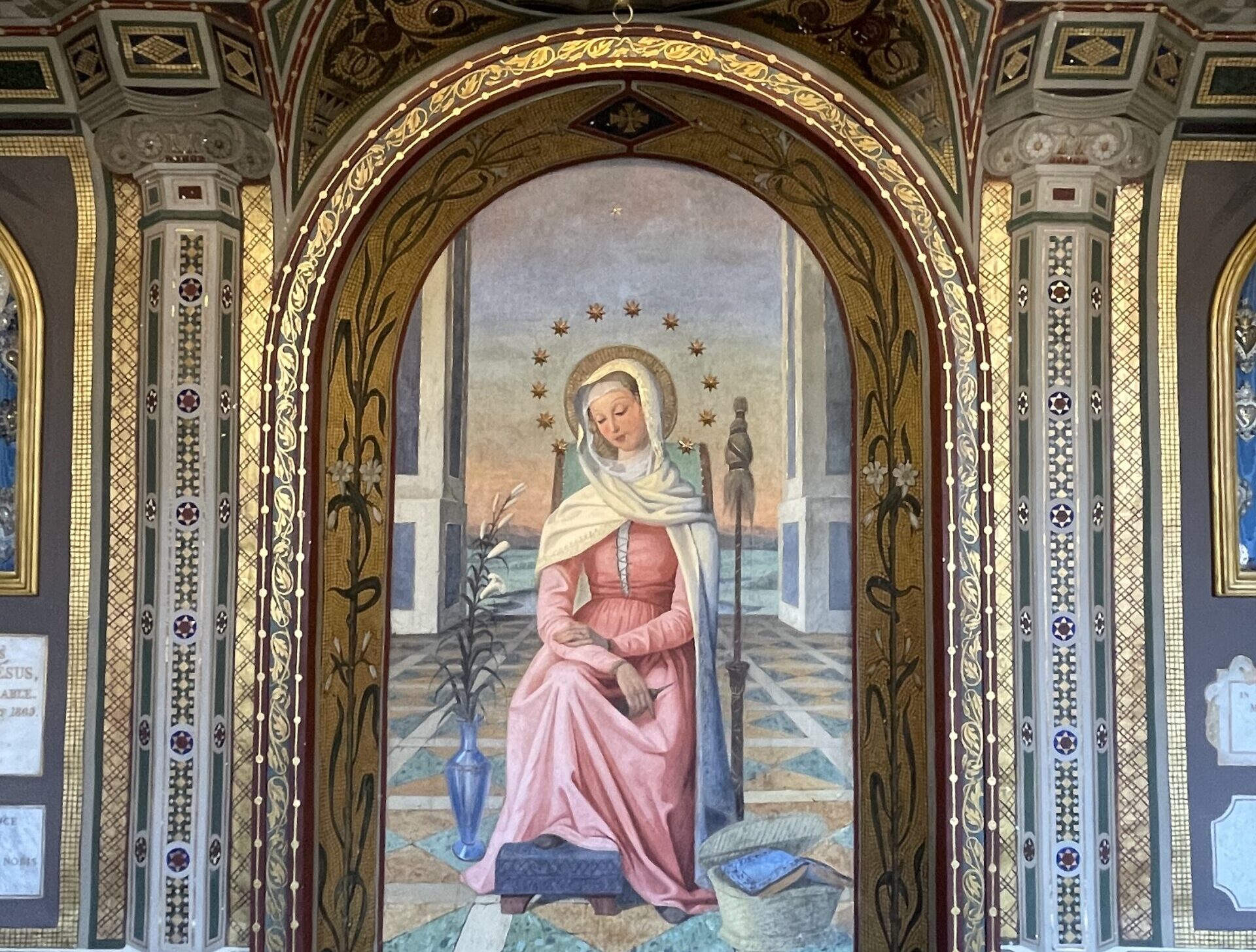October 20th is traditionally, in the Society, the feast of Mater Admirabilis. We are all very familiar with the fresco painted by Pauline Perdrau in 1844 on the second floor wall of the cloister at Trinita dei Monti in Rome. Copies of this image are to be found in every Sacred Heart school and community throughout the world. Some are paintings, some statues, all attempt to be faithful copies of the original.
What most people do not know is that Pauline Perdrau, herself, continued to paint copies of the original throughout her long life, though she was the first to acknowledge that she was never able to reproduce the face of the original. Pauline also made changes in the details of the painting. One sees the work in the basket “grow” over the years, the trim on her dress is in other patterns and colors, as is the work on the footstool; the color of the thread she is spinning is at times black; the vase with the lilies is sometimes clear, sometimes, blue. The background scenery at times reflects what she sees out of her window as she paints and in one painting, there are five little birds “playing” around the image of Mary.
I have been searching for originals of Mater by Pauline for the past 10 years and in one week, at the end of May, I discovered two more. For her feast this year, I offered to share these with you through our web page. Each painting is identified by date, present and previous locations and, if we know it, name. You may wish to take time with each one, studying the differences and noting any changes you may see in the image of Mary. These are not always obvious, but, by the time one gets to the last one offered here, “Mater in the House of St. John,” it seems to me that Mary has passed from being an adolescent girl in 1844 to a widowed mother who has lost her only child.
1. Trinita dei Monti 1844
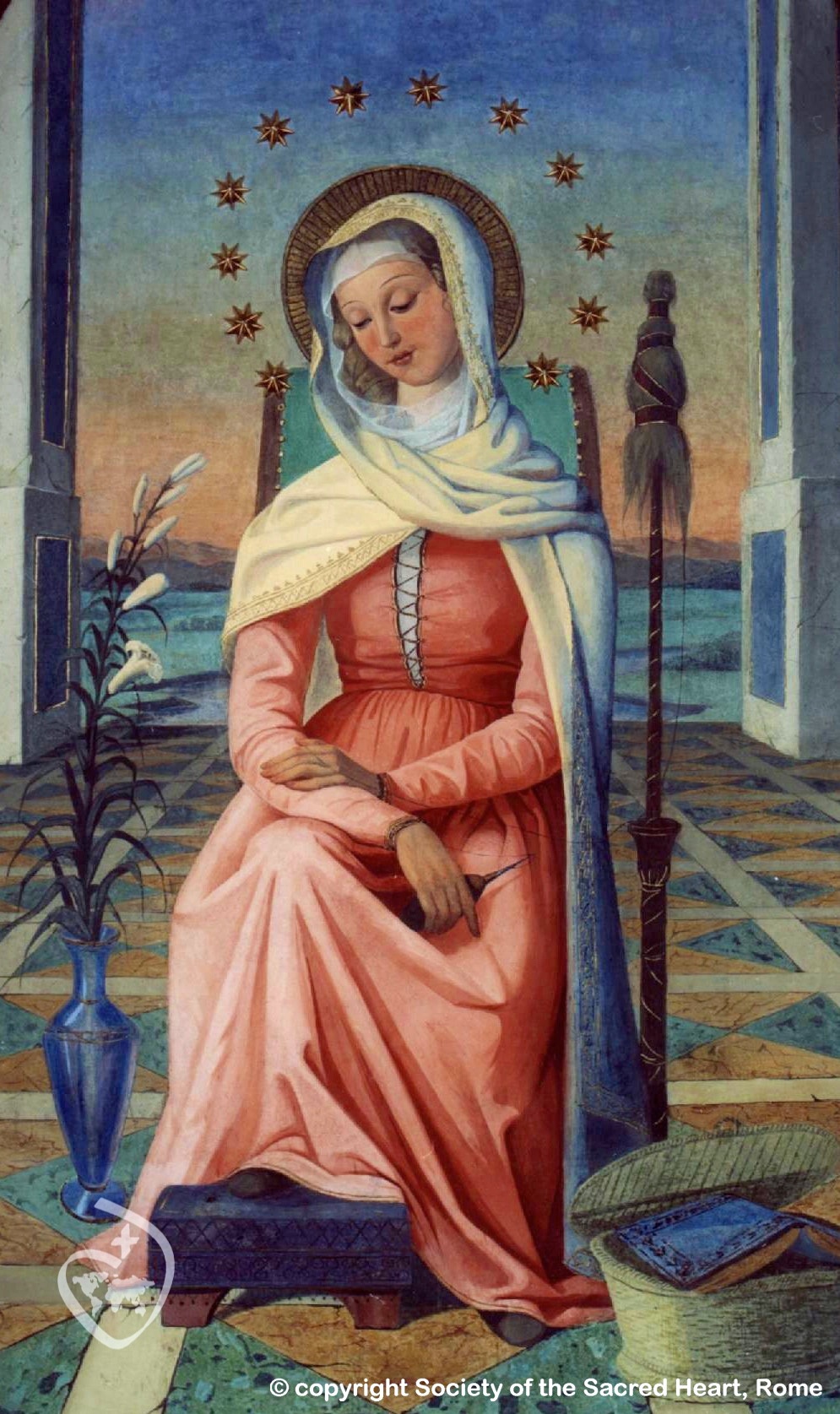
2. Colegio del Sagrado Corazón, Granada (Bourges), 1860

3. St. Charles, MO (St. Michel, LA; Cincinnati, OH) 1865
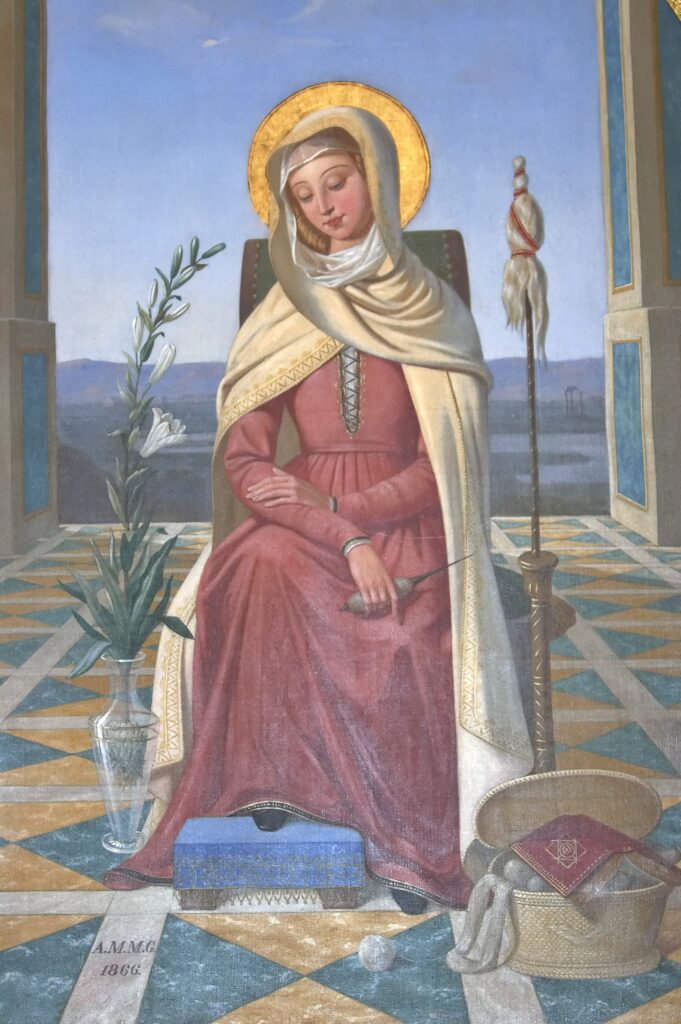
4. Padova, IT 1865
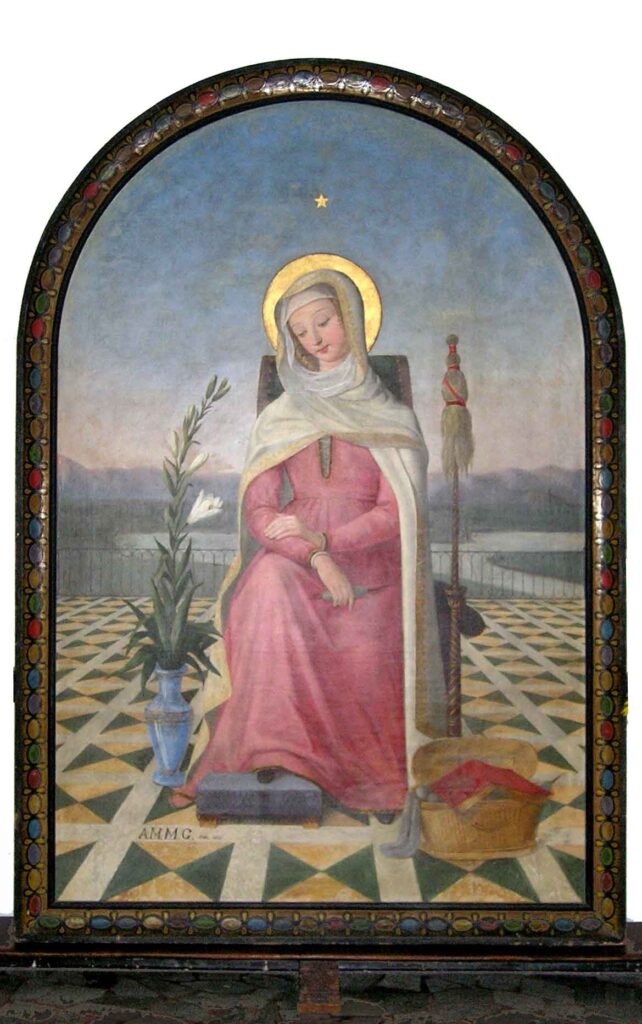
5. Grand Coteau 1866
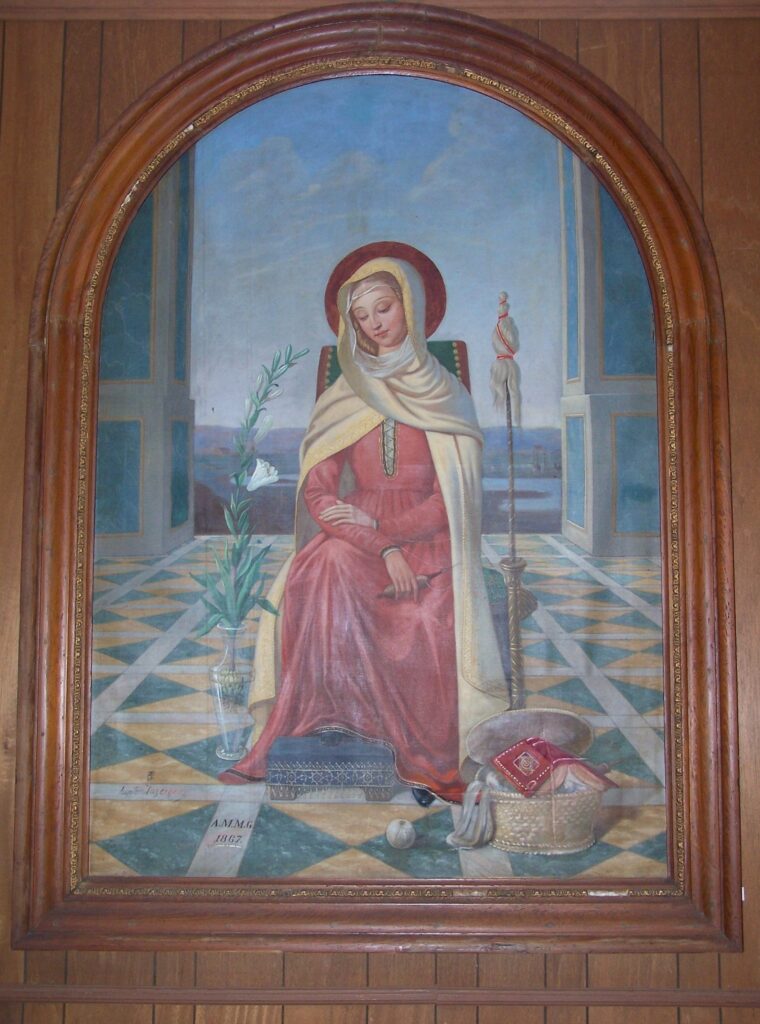
6. “Mater of the Birds,” Godella, Spain 1883
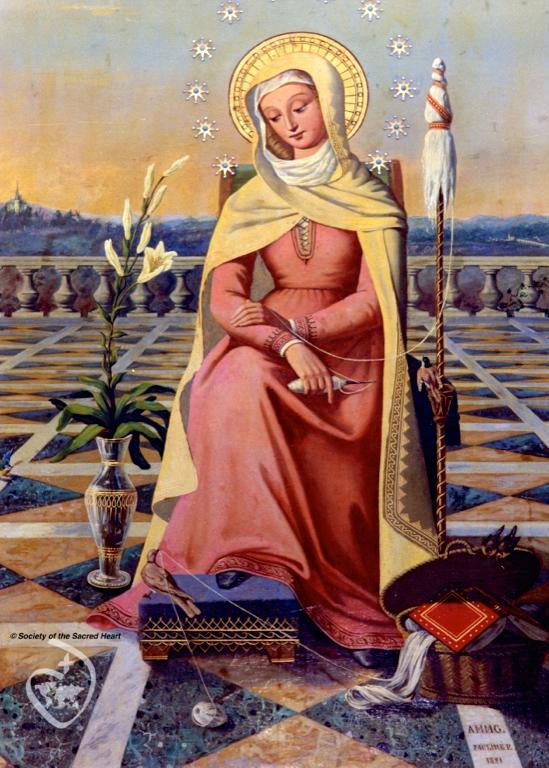
7. General Archives, Rome (Torino, IT) 1883

8. “Mater in the House of St. John,” 1883 (original lost)
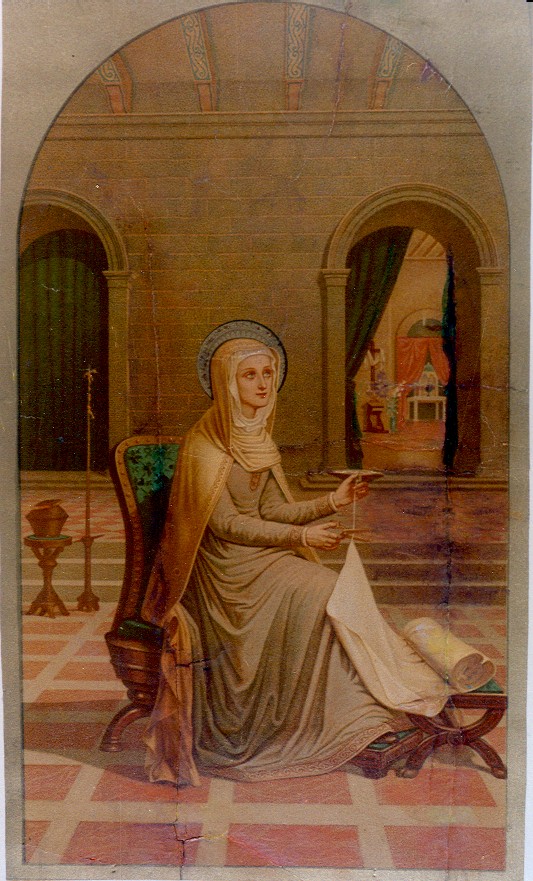
9. Abbaye de Layrac – 1889

Read more about Pauline Perdrau at Archivissima (in Italian)
Watch a video about Pauline Perdrau (in Italian) below:
Margaret Phelan rscj and Alice Usai, General Archives
Our Spirituality |The Sacred Heart Spiritual Tradition


